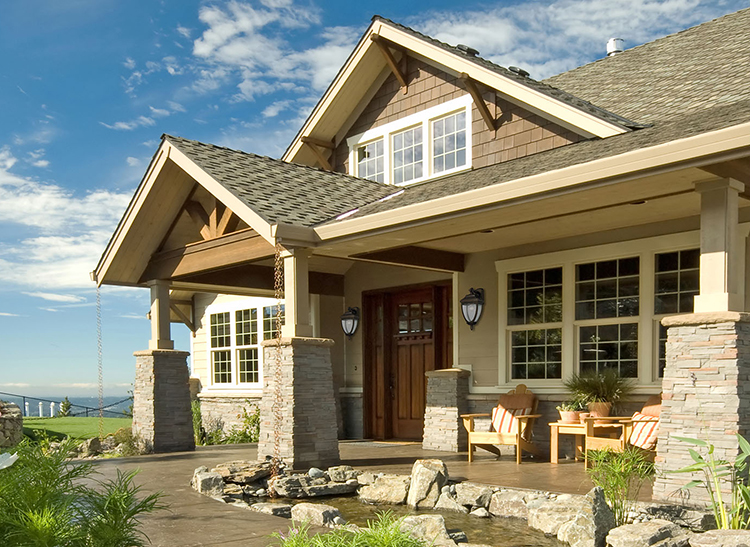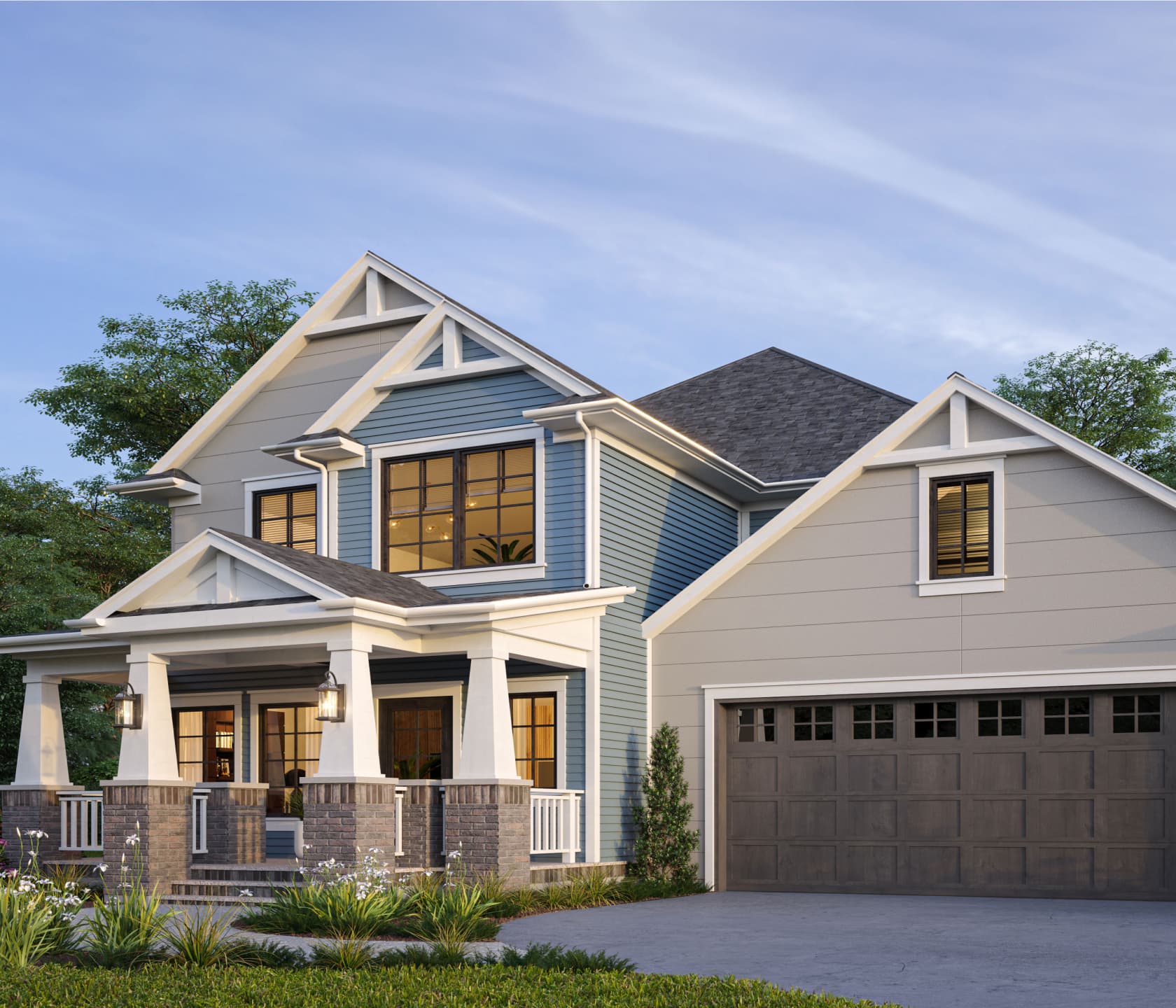The Duty of Arts & & Crafts Architects in Elevating Architectural Services in Residential Style
Arts and Crafts architects significantly influence domestic design with their commitment to workmanship and sustainability. They focus on handmade details and natural materials, which improve both looks and neighborhood identity. By entailing clients in the style procedure, these architects develop one-of-a-kind space that resonate with personal tastes. This technique raises concerns regarding the future trajectory of residential architecture and its potential influence on community dynamics. craftsman style house. What exists ahead for this timeless layout ideology?

The Principles of Arts and Crafts Architecture
The significance of Arts and Crafts architecture exists in its commitment to workmanship and simplicity. This building motion emerged in the late 19th century as a reaction to industrialization, highlighting the value of handmade details and all-natural products. The concepts of Arts and Crafts architecture prioritize capability and harmony with the atmosphere. Frameworks commonly feature low-pitched roofing systems, wide eaves, and subjected rafters, promoting a feeling of unity with nature.
Artisans played a significant duty in this design, usually incorporating decorative elements like discolored glass, ceramic tiles, and woodwork, which mirror regional workmanship. The color palette often tends to be earthy and subdued, allowing structures to mix perfectly right into their surroundings. Additionally, the style urges open flooring strategies and public areas, fostering a feeling of togetherness. On the whole, the concepts of Arts and Crafts architecture celebrate the elegance of simpleness and the value of human link to both nature and neighborhood.

Sustainable Practices in Residential Style
While the demand for environmentally liable living proceeds to grow, lasting methods in domestic layout have actually gotten considerable traction amongst architects and home owners alike. Architects are significantly including energy-efficient modern technologies and sustainable materials into their styles, aiming to decrease carbon impacts and improve power preservation. Methods such as passive solar layout, green roofing systems, and rainwater harvesting systems are coming to be typical parts of modern household architecture.
Moreover, the option of in your area sourced materials lessens transportation exhausts and sustains regional economic climates. Focus on natural light and ventilation not only improves interior air top quality however also decreases reliance on fabricated illumination and environment control systems. These sustainable practices show a dedication to maintaining the atmosphere while offering homeowners with comfortable, reliable space. As recognition of environmental concerns grows, the integration of sustainability in property design is poised to end up being a defining characteristic of modern architecture, directed by the concepts developed by Arts and Crafts architects.
Modification and Customization in Home Design
Customization and personalization in home style have become key patterns in action to the growing need for one-of-a-kind living settings that show private tastes and way of livings. Home owners significantly seek to tailor spaces that reverberate with their individual identities, bring about an extra purposeful connection with their living spaces. craftsman style house. This activity motivates architects to engage clients in the style process, fostering partnership that assures the final end result symbolizes the home owner's vision
Aspects such as bespoke formats, personalized materials, and customized coatings permit a varied variety of expressions in residential layout. Arts and Crafts architects play a pivotal role in this advancement, highlighting workmanship and high quality. Their concentrate on incorporating imaginative elements with functionality warranties that each home is not just visually pleasing however likewise distinctively suited to the inhabitants' demands. This emphasis on customization enhances the total residential experience, creating rooms that are both individual and long-lasting.
The Effect of Arts and Crafts Architects on Community Aesthetics
As areas develop, the influence of Arts and Crafts architects considerably shapes their aesthetic landscape. By stressing handmade information, natural products, and traditional construction methods, these architects produce homes that reverberate with their environments. Their designs frequently incorporate local you could try this out vegetations, textures, and shades, cultivating a sense of harmony between developed environments and nature.
The Arts and Crafts movement promotes community identity through architectural continuity. By urging homeowners to adopt similar layout concepts, areas establish a cohesive character that enhances aesthetic allure. This building harmony not just enriches the aesthetic experience however also infuses a sense of pride among residents.
In addition, the focus on sustainability and workmanship in Arts and Crafts architecture straightens with modern-day worths, making these styles pertinent in contemporary settings. Eventually, Arts and Crafts architects contribute considerably to the general appeal and cultural stability of areas, leaving a lasting influence on their aesthetic tradition.

Future Patterns in Arts and Crafts Architecture
With an increasing click here to read emphasis on sustainability and personalization, future fads in Arts and Crafts architecture are positioned to mix conventional workmanship with modern-day advancement - craftsman style house. Architects are most likely to focus on green products, utilizing reclaimed wood and natural rock to enhance the sustainability of residential styles. The integration of smart home modern technology will come to be prevalent, permitting personalized living experiences without jeopardizing visual integrity
The resurgence of artisanal strategies will cultivate a restored admiration for handcrafted components, such as bespoke cabinetry and personalized tile work. Future designs may also mirror a focus on community-oriented spaces, encouraging interaction and link amongst citizens. Exterior living areas will get importance, effortlessly integrating nature right into the home atmosphere. As Arts and Crafts architecture develops, it will remain to honor its roots while adjusting to modern demands, producing harmonious spaces that show specific values and lifestyles.
Often Asked Inquiries
What Influenced the Arts and Crafts Motion in Architecture?
The Arts and Crafts movement in architecture was inspired by a reaction versus automation, highlighting handmade quality, all-natural materials, and a return to typical workmanship, intending to create harmonious, useful rooms that celebrated creativity and originality.
Exactly how Do Arts and Crafts Architects Collaborate With Clients?
Arts and crafts architects work together with clients through open discussion, focusing on personal demands and looks. They emphasize workmanship and sustainability, fostering a partnership that incorporates the client's vision with the designer's experience in design and products.
What Products Are Typically Made Use Of in Arts and Crafts Houses?
Usual products in Arts and Crafts homes include all-natural timber, stone, and block, highlighting company website craftsmanship and natural looks. These components produce a cozy, inviting atmosphere, reflecting the activity's dedication to high quality and simpleness in design.
Just how Do Arts and Crafts Layouts Improve Indoor Living Rooms?
Arts and Crafts designs improve indoor home by promoting all-natural light, open layout, and handcrafted details. These aspects foster a cozy, inviting environment, motivating a link in between citizens and their environments with thoughtful, useful aesthetic appeals.
What Are Some Famous Instances of Arts and Crafts Architecture?
Famous examples of Arts and Crafts architecture include the Wager Home, Greene and Greene's masterpiece in California, and the Robie House by Frank Lloyd Wright. These structures display handcrafted information and consistency with nature, defining the movement's essence.